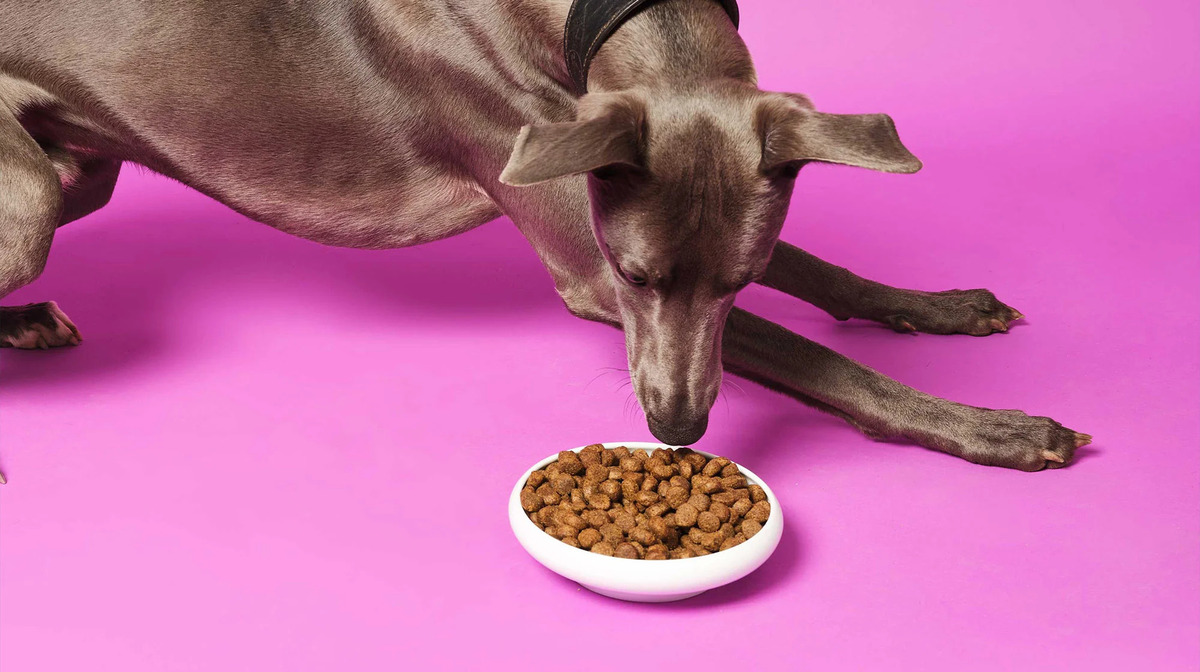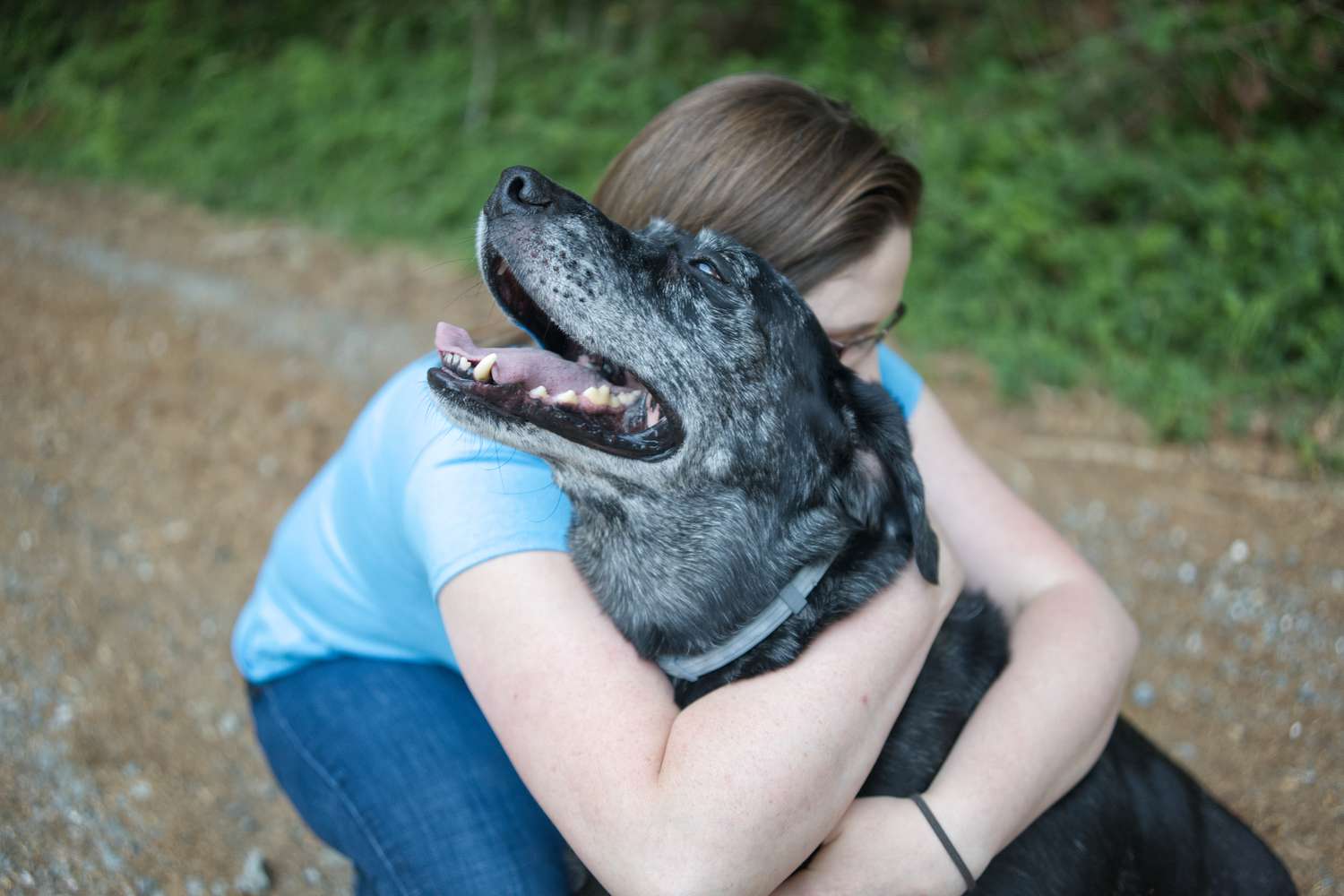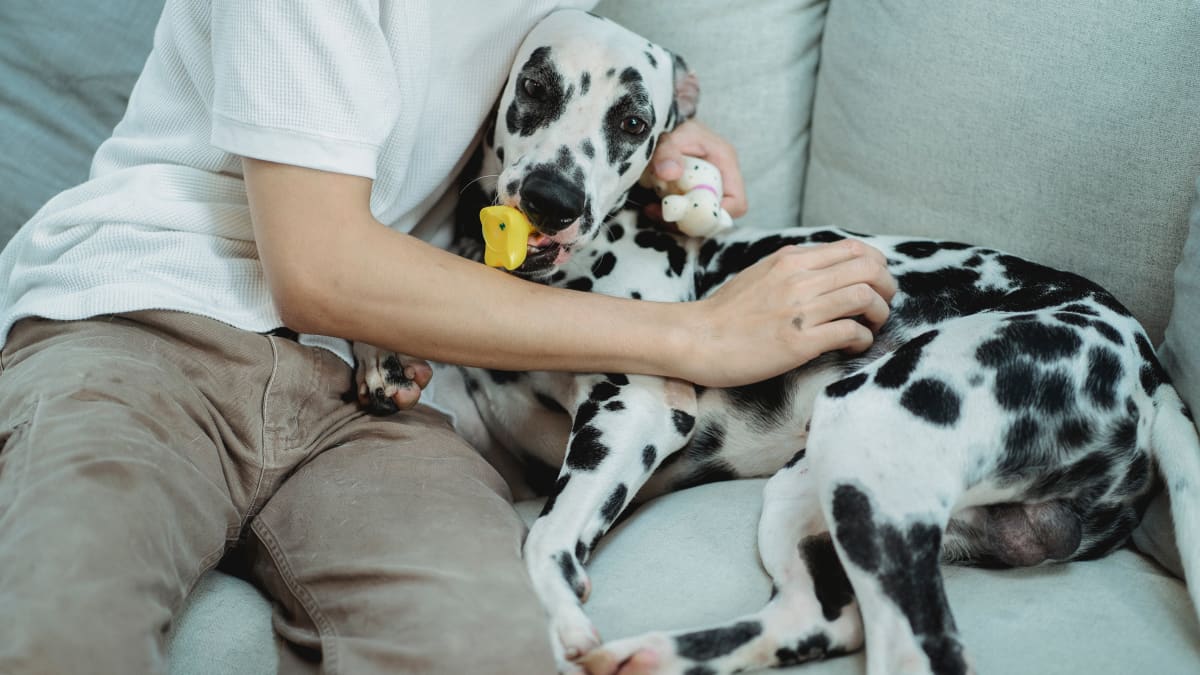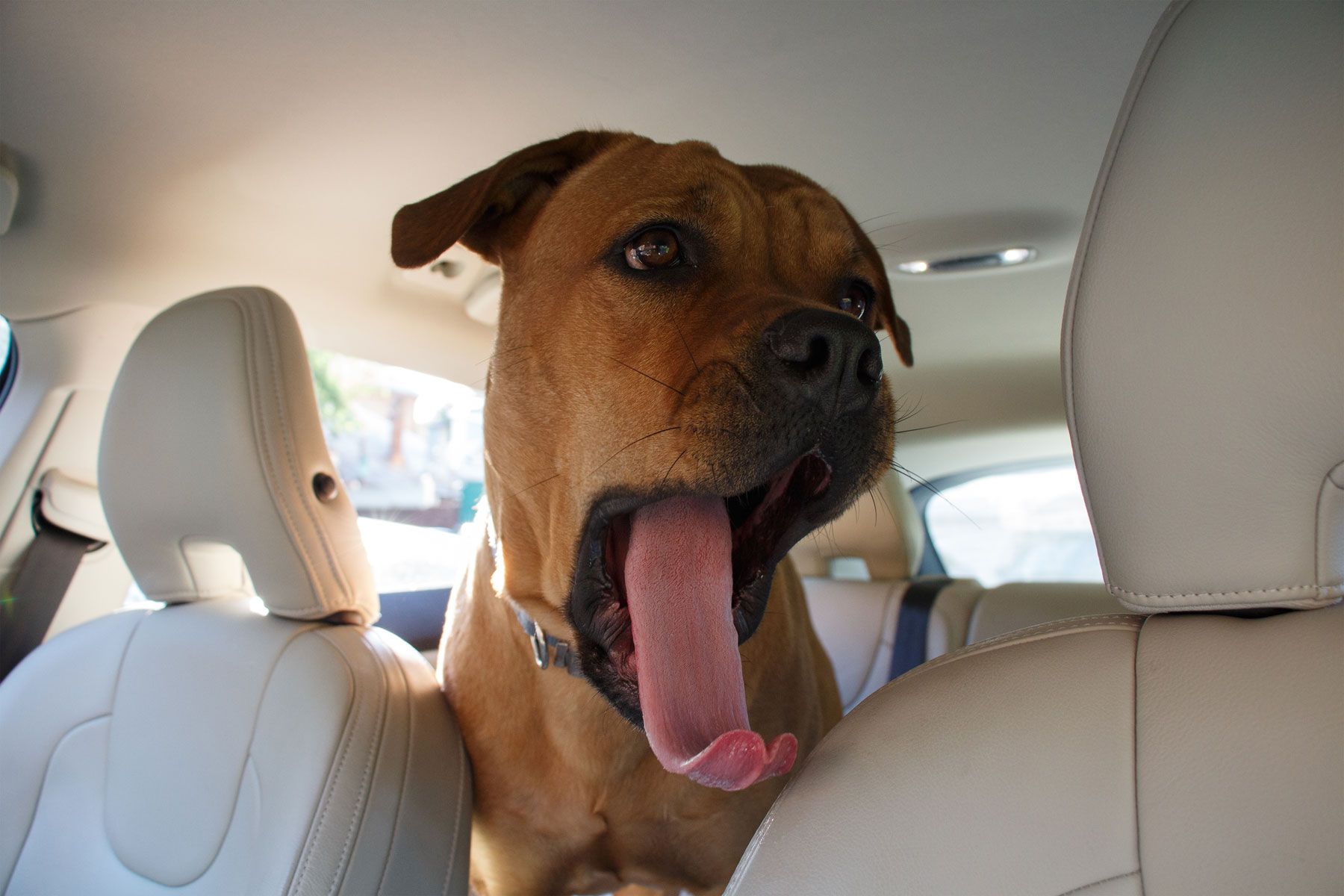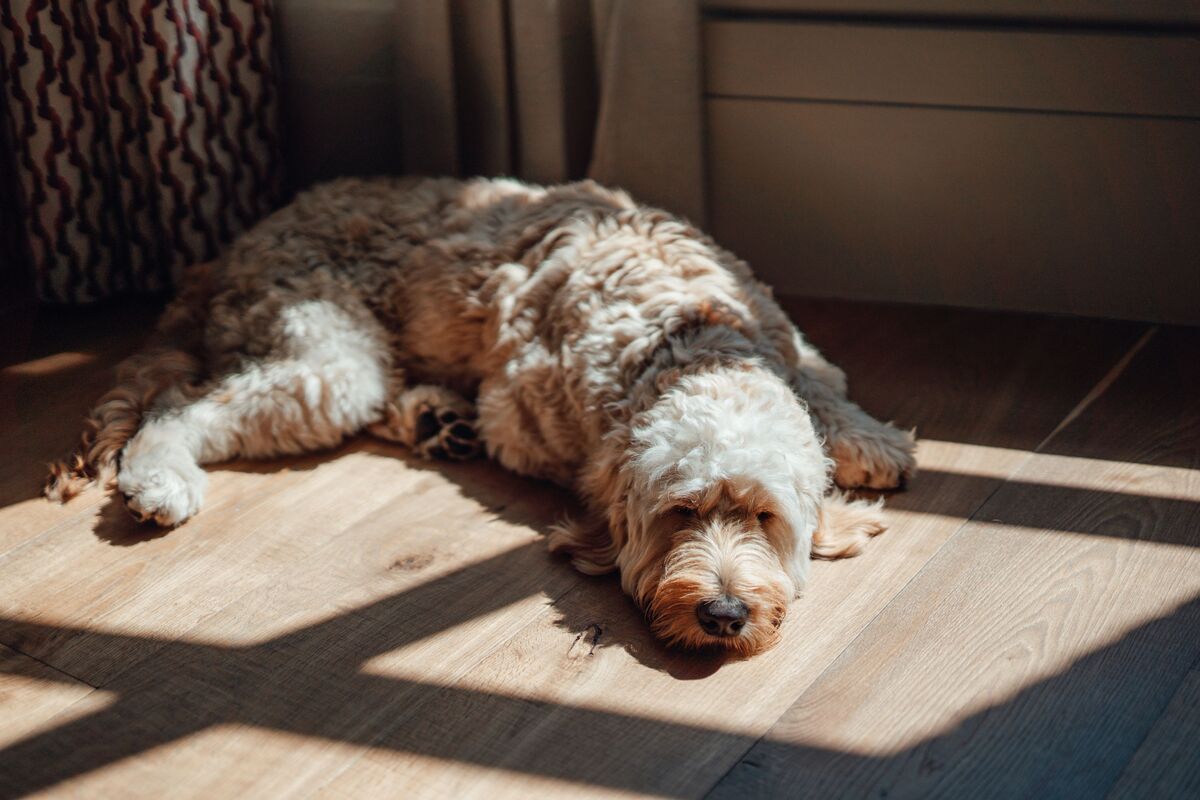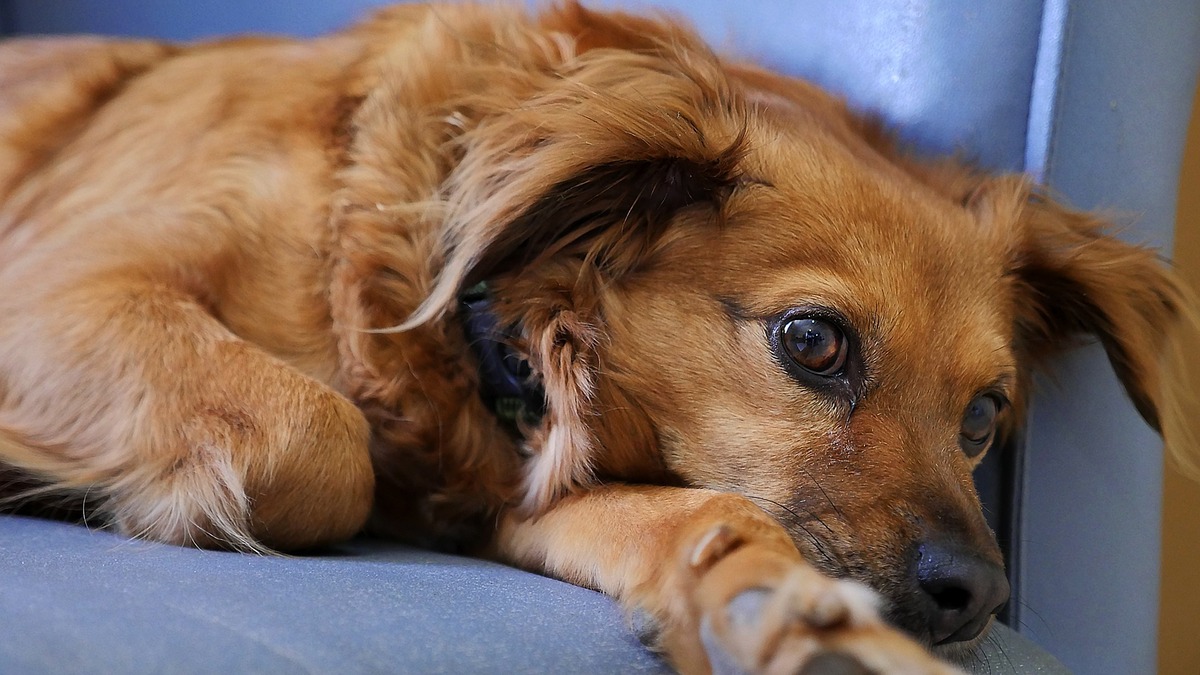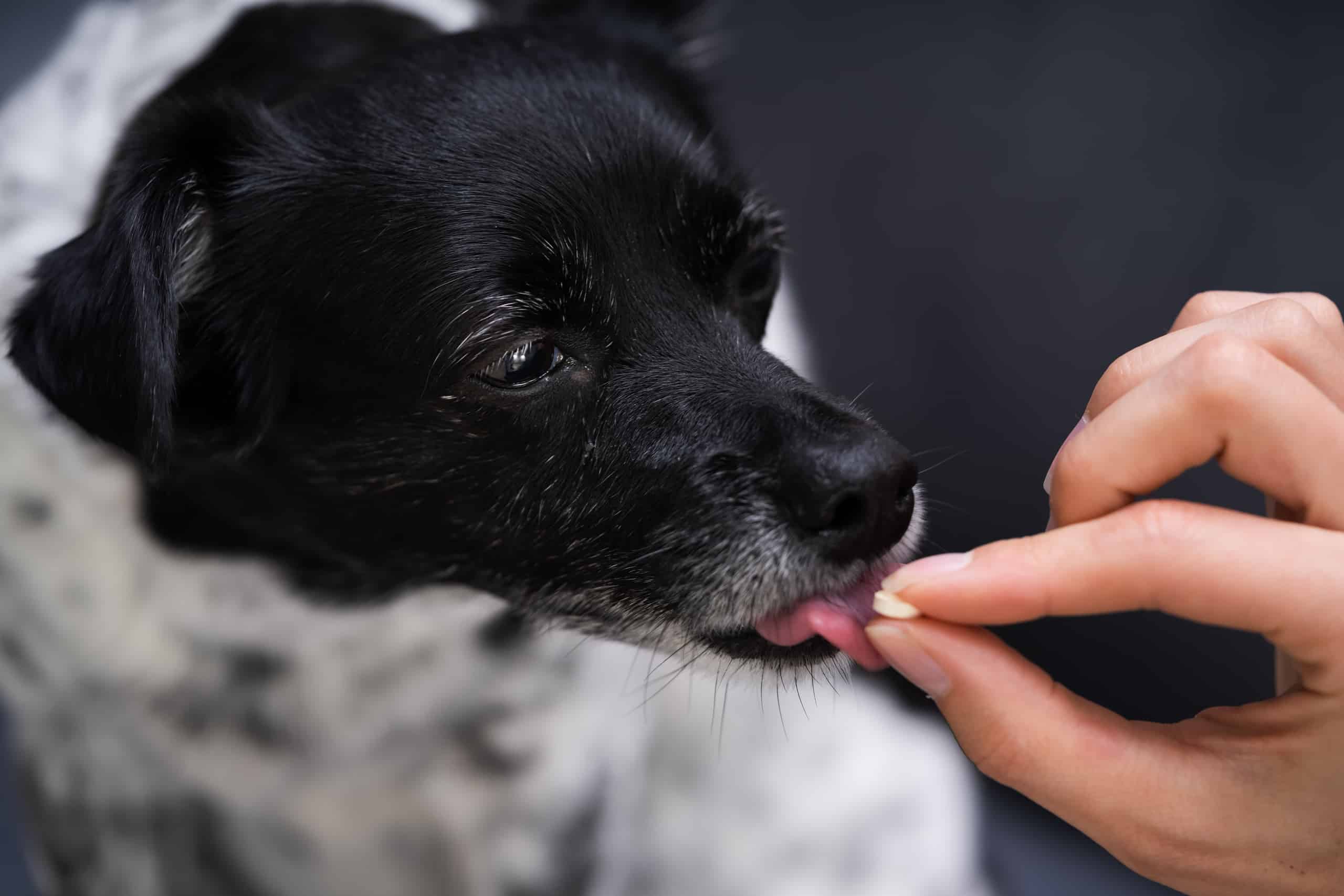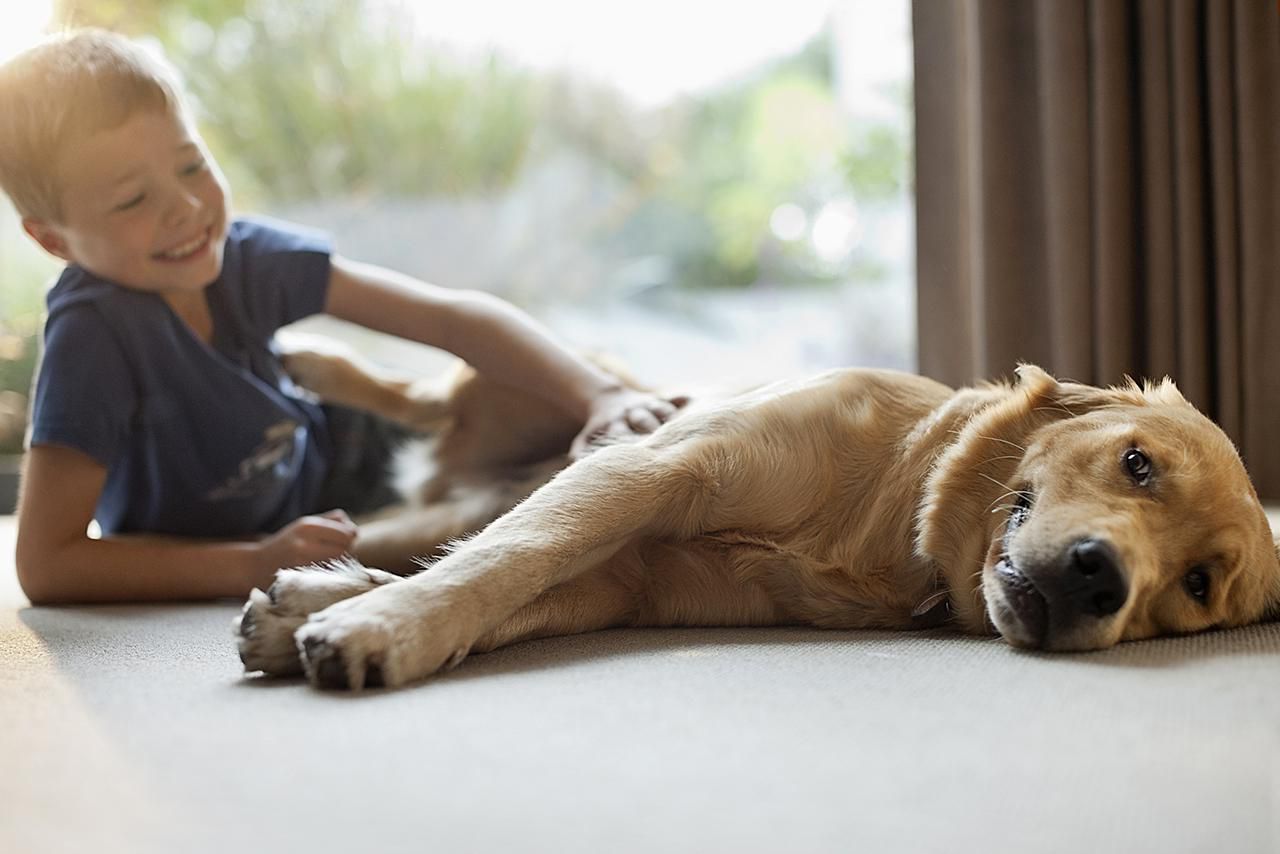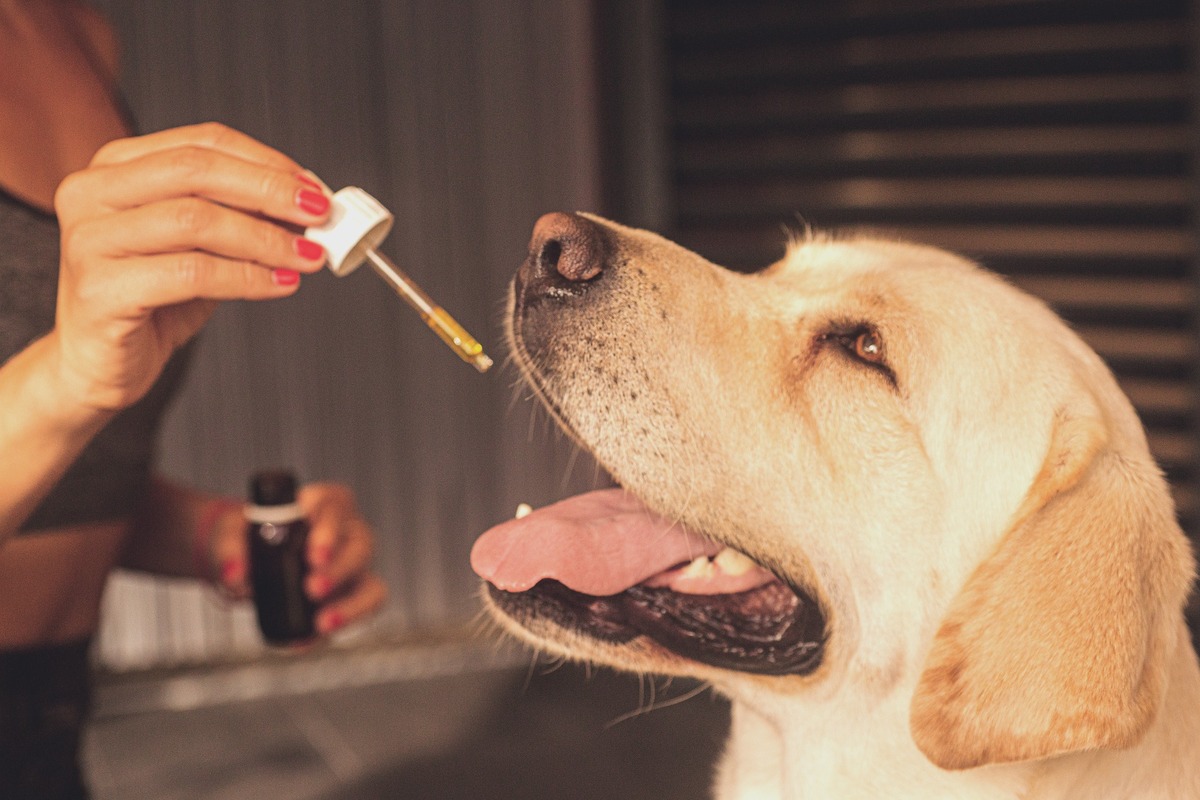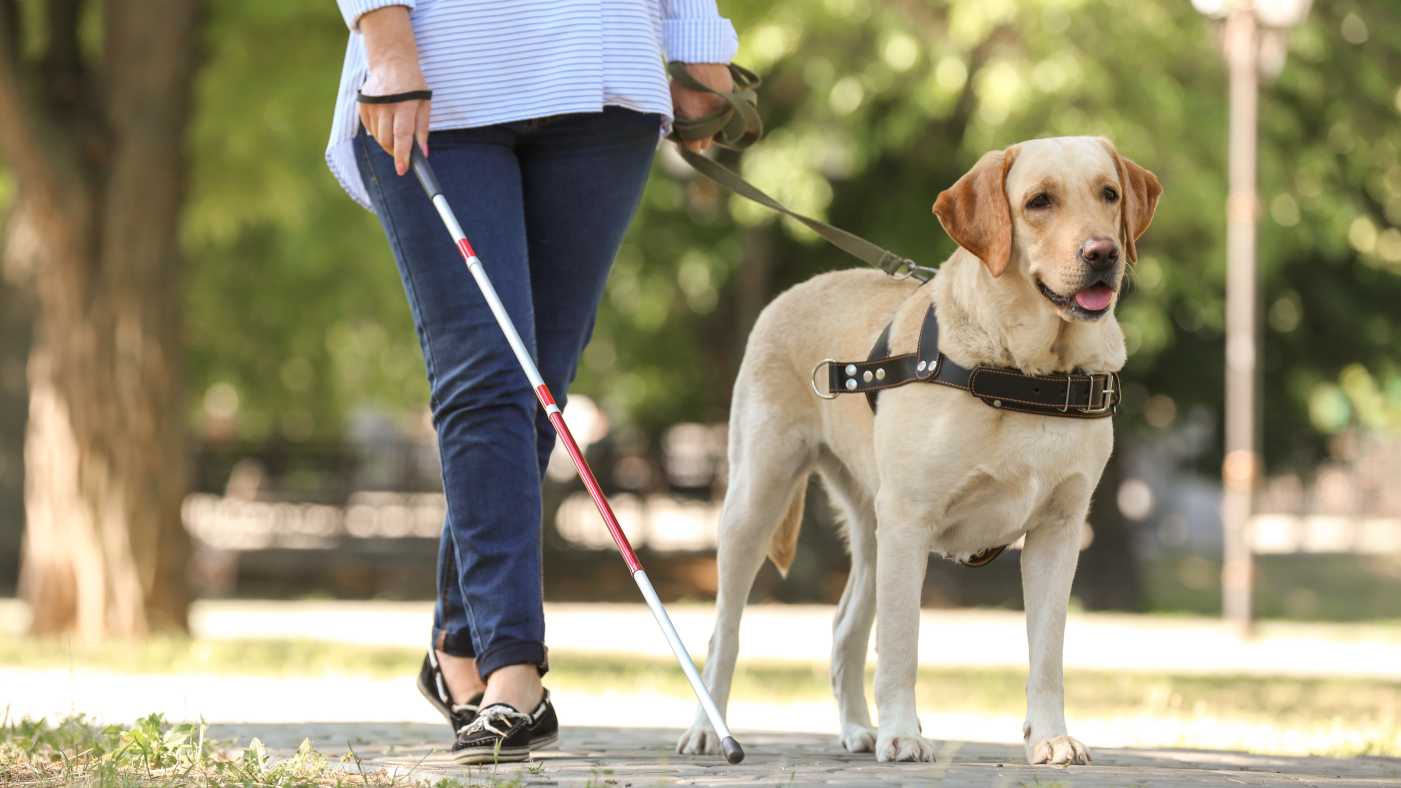Home>Health & Wellness>Behavior & Cognitive Care>What To Do With A Small Dog With Anxiety And Shaking
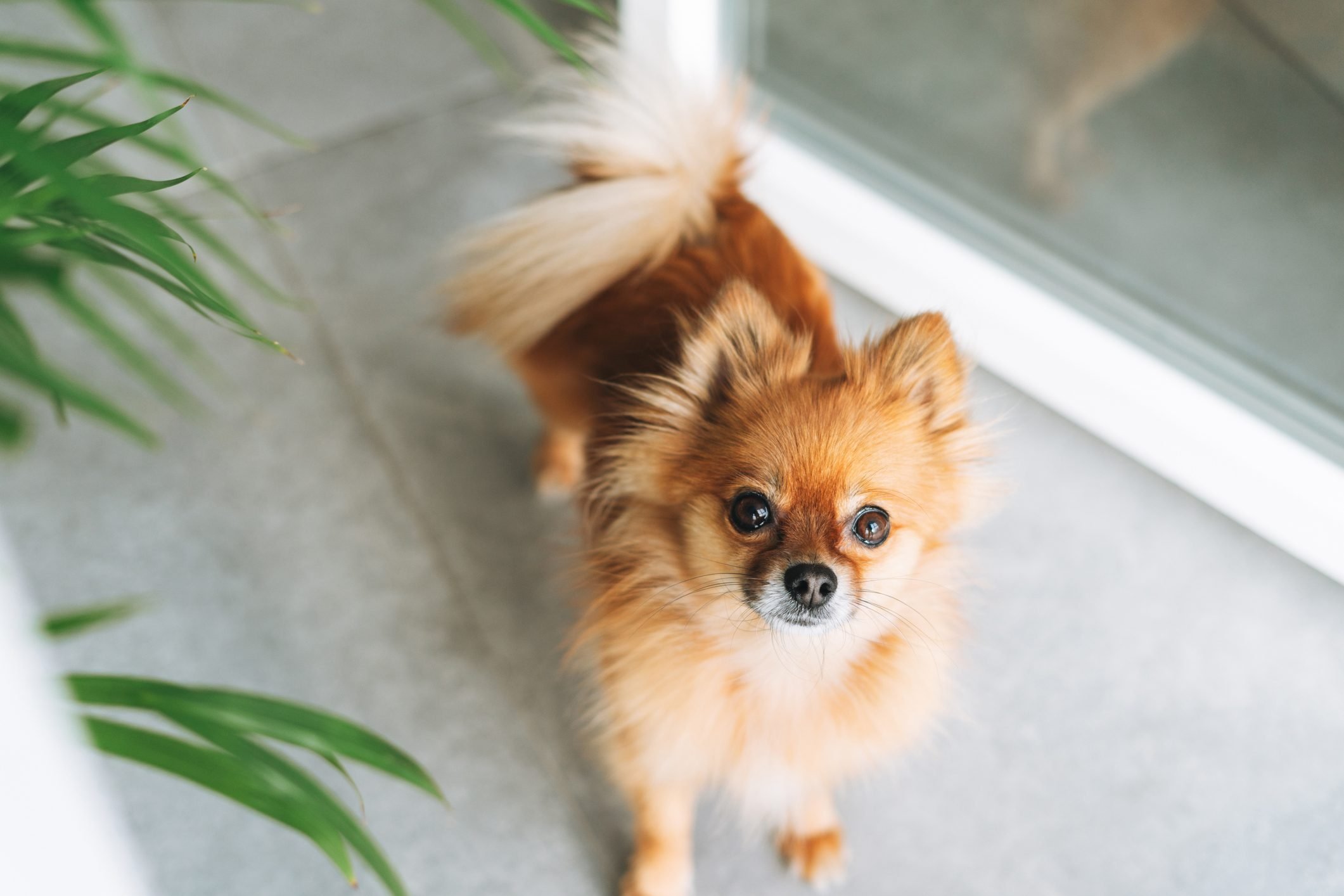

Behavior & Cognitive Care
What To Do With A Small Dog With Anxiety And Shaking
Published: January 29, 2024
Discover effective behavior and cognitive care tips for your small dog with anxiety and shaking. Learn how to calm and support your furry friend.
(Many of the links in this article redirect to a specific reviewed product. Your purchase of these products through affiliate links helps to generate commission for Pawsomeoldies.com, at no extra cost. Learn more)
Table of Contents
- Understanding Small Dog Anxiety and Shaking
- Identifying Triggers for Your Small Dog's Anxiety
- Creating a Safe and Comfortable Environment for Your Small Dog
- Providing Positive Reinforcement and Training for Anxiety
- Seeking Professional Help for Your Small Dog's Anxiety
- Exploring Medication and Natural Remedies for Small Dog Anxiety
Understanding Small Dog Anxiety and Shaking
Small dogs, just like humans, can experience anxiety and shaking due to various reasons. Understanding the root causes of these behaviors is crucial in providing the best care for your furry companion.
Anxiety in small dogs can manifest in different ways, including trembling, pacing, excessive barking, and seeking constant reassurance. It's essential to recognize that anxiety in dogs is not uncommon and can be triggered by a range of factors, such as separation from their owners, loud noises, unfamiliar environments, or past traumatic experiences.
Shaking, often associated with anxiety in small dogs, can be a physical manifestation of their emotional distress. It's their way of coping with the overwhelming feelings of fear or unease. Observing your small dog's body language and behavior can provide valuable insights into their emotional state.
When faced with anxiety and shaking, it's important to approach the situation with empathy and understanding. Small dogs rely on their owners for comfort and security, and acknowledging their distress is the first step in addressing their anxiety.
By delving into the intricate world of small dog anxiety and shaking, you can gain a deeper understanding of your furry friend's emotional needs and provide the support and care they require to lead a happy and fulfilling life.
Read more: What To Do For Anxiety In Elderly Dogs
Identifying Triggers for Your Small Dog's Anxiety
Understanding the specific triggers that contribute to your small dog's anxiety is pivotal in devising effective strategies to alleviate their distress. Small dogs, with their sensitive nature, can be susceptible to various triggers that prompt feelings of unease and fear. By identifying these triggers, you can proactively work towards minimizing their impact and creating a more secure environment for your furry companion.
-
Separation Anxiety: Many small dogs experience separation anxiety when left alone. They form strong bonds with their owners and can become distressed when separated. Signs of separation anxiety may include excessive barking, destructive behavior, and restlessness. Identifying these signs can help you address the underlying cause of your dog's anxiety.
-
Loud Noises: Small dogs are often more sensitive to loud noises such as thunderstorms, fireworks, or even household appliances. These sudden and intense sounds can trigger anxiety and shaking in small dogs. Recognizing your dog's reaction to loud noises can aid in implementing measures to minimize their exposure and provide comfort during such events.
-
Unfamiliar Environments: Small dogs may feel anxious in unfamiliar surroundings, especially if they have not been adequately socialized. New places, people, or other animals can evoke feelings of insecurity and anxiety in small dogs. Identifying situations that cause distress can help you gradually introduce your dog to new experiences in a controlled and reassuring manner.
-
Past Traumatic Experiences: Small dogs that have undergone past traumatic experiences, such as abuse or neglect, may carry emotional scars that contribute to their anxiety. Understanding your dog's history, especially if adopted from a shelter or rescue, can shed light on potential triggers and help you provide the necessary support and reassurance.
-
Changes in Routine: Small dogs thrive on routine and can become anxious when their daily schedule is disrupted. Changes such as moving to a new home, alterations in feeding times, or modifications in their living environment can trigger anxiety. Recognizing the impact of these changes on your dog's behavior is essential in addressing their anxiety.
By keenly observing your small dog's behavior and reactions in various situations, you can pinpoint the specific triggers that contribute to their anxiety and shaking. This heightened awareness enables you to implement targeted interventions and create a supportive environment that minimizes stressors and promotes your small dog's emotional well-being.
Creating a Safe and Comfortable Environment for Your Small Dog
Ensuring a safe and comfortable environment is essential in nurturing the well-being of your small dog, especially when addressing anxiety and shaking. By creating a space that fosters security and tranquility, you can significantly alleviate your furry companion's distress and promote a sense of calm.
Designated Safe Haven
Designate a specific area within your home as a safe haven for your small dog. This area should be secluded from high-traffic zones and equipped with familiar bedding, toys, and comforting items. By providing a designated safe space, your dog can retreat to this area when feeling anxious, establishing a sense of security and predictability.
Calming Sensory Elements
Incorporate calming sensory elements into your small dog's environment. Soft, soothing music or white noise can help mask loud or startling sounds, reducing anxiety triggers. Additionally, utilizing pheromone diffusers or sprays designed to mimic maternal dog pheromones can promote a sense of reassurance and calmness for your small dog.
Read more: What Does A Dog Anxiety Jacket Do?
Consistent Routine and Structure
Maintain a consistent daily routine to provide your small dog with a sense of predictability and stability. Regular feeding times, exercise schedules, and designated quiet times for rest can help minimize anxiety stemming from unpredictability. Dogs thrive on routine, and a structured environment can significantly reduce their stress levels.
Positive Socialization Opportunities
Facilitate positive socialization experiences for your small dog to build confidence and reduce anxiety in unfamiliar situations. Controlled introductions to new people, animals, and environments can help desensitize your dog to potential triggers, fostering a sense of security and ease in various social settings.
Safety Measures and Comforting Resources
Implement safety measures such as secure fencing in outdoor spaces and sturdy gates to prevent your small dog from encountering potentially anxiety-inducing situations, such as interactions with unfamiliar animals or exposure to loud external stimuli. Additionally, provide comforting resources such as interactive toys, puzzle feeders, and enrichment activities to engage your dog's mind and alleviate anxiety.
Supportive Human Interaction
Create a nurturing and supportive bond with your small dog through gentle and reassuring interactions. Offering comforting physical touch, such as gentle petting and cuddling, can convey a sense of security and trust. Your presence and soothing demeanor can significantly contribute to your dog's overall sense of well-being and comfort.
By meticulously curating a safe and comfortable environment tailored to your small dog's specific needs, you can create a sanctuary that minimizes anxiety triggers and fosters a profound sense of security and tranquility. This dedicated approach to your small dog's environment can play a pivotal role in mitigating anxiety and shaking, ultimately enhancing their overall quality of life.
Read more: What Does A Service Dog Do For Anxiety?
Providing Positive Reinforcement and Training for Anxiety
Addressing small dog anxiety through positive reinforcement and training techniques is a proactive approach to nurturing their emotional well-being and building resilience against anxiety triggers. By employing positive reinforcement methods, you can empower your small dog to develop coping mechanisms and a sense of confidence in the face of anxiety-inducing situations.
Understanding Positive Reinforcement
Positive reinforcement involves rewarding desired behaviors to encourage their repetition. When applied to managing small dog anxiety, this approach focuses on reinforcing calm and relaxed behaviors while gently redirecting or diffusing anxious responses. By associating positive experiences with specific situations, you can gradually reshape your dog's emotional responses and reduce their anxiety levels.
Desensitization and Counterconditioning
Desensitization and counterconditioning are valuable techniques in addressing small dog anxiety. Desensitization involves gradually exposing your dog to anxiety triggers in a controlled and incremental manner, allowing them to acclimate to the stimuli without becoming overwhelmed. Counterconditioning complements desensitization by pairing anxiety-inducing stimuli with positive experiences, such as treats or play, to reframe your dog's emotional associations with these triggers.
Training for Relaxation and Calmness
Training exercises focused on relaxation and calmness can significantly benefit small dogs prone to anxiety and shaking. Teaching your dog to settle on cue, practice deep breathing exercises, and engage in calming activities like gentle massage or TTouch can help them develop self-soothing techniques. These exercises promote emotional regulation and provide your dog with constructive outlets for managing their anxiety.
Positive Reinforcement Techniques
Utilizing positive reinforcement techniques, such as clicker training or verbal praise, can reinforce desirable behaviors and responses in your small dog. When your dog exhibits calm behavior in the presence of anxiety triggers, promptly rewarding them with treats, verbal praise, or affection communicates that their composed demeanor is commendable. Consistent positive reinforcement strengthens the association between calm behavior and positive outcomes, encouraging your dog to exhibit similar responses in the future.
Patience and Consistency
Patience and consistency are fundamental when implementing positive reinforcement and training for small dog anxiety. It's essential to approach the process with empathy and understanding, acknowledging that progress may occur gradually. Consistent application of positive reinforcement techniques, coupled with a patient and supportive demeanor, can yield significant improvements in your dog's ability to manage anxiety and shaking.
By integrating positive reinforcement and training tailored to address small dog anxiety, you can empower your furry companion to navigate challenging situations with greater resilience and composure. This proactive approach not only mitigates anxiety triggers but also fosters a deeper bond built on trust, understanding, and mutual support.
Seeking Professional Help for Your Small Dog's Anxiety
Seeking professional assistance is a crucial step in addressing your small dog's anxiety, especially when the symptoms persist despite your best efforts. Consulting a qualified veterinarian or a certified animal behaviorist can provide valuable insights and specialized guidance tailored to your dog's specific needs.
Veterinarians with expertise in behavioral care can conduct comprehensive assessments to rule out any underlying medical conditions that may contribute to your small dog's anxiety. Physical health issues, such as pain, discomfort, or neurological disorders, can manifest as anxiety-related behaviors in dogs. By conducting thorough examinations and diagnostic tests, veterinarians can accurately diagnose and treat any medical factors influencing your dog's emotional well-being.
In cases where behavioral interventions are warranted, seeking the expertise of a certified animal behaviorist or a professional dog trainer specializing in anxiety-related behaviors is highly beneficial. These professionals possess in-depth knowledge of canine behavior and psychology, allowing them to devise customized behavior modification plans to address your small dog's anxiety.
Behavioral consultations typically involve detailed assessments of your dog's behavior, environmental factors, and triggers contributing to their anxiety. Through careful observation and analysis, behaviorists can identify specific anxiety triggers and develop tailored intervention strategies to mitigate your dog's distress. These strategies may encompass desensitization protocols, counterconditioning techniques, and structured behavior modification exercises aimed at fostering emotional resilience and confidence in your small dog.
Furthermore, professional guidance extends to providing you, the pet parent, with essential education and support. Understanding how to effectively communicate with and support your small dog during anxiety-provoking situations is pivotal in facilitating their progress. Professional behaviorists can equip you with practical tools, management strategies, and ongoing support to implement the recommended interventions consistently and effectively.
In some instances, medication may be recommended as part of a comprehensive treatment plan for your small dog's anxiety. Veterinarians and behaviorists can collaborate to assess the appropriateness of medication and prescribe pharmacological interventions, such as anti-anxiety medications or supplements, to complement behavioral strategies. This collaborative approach ensures that your small dog receives holistic care addressing both the emotional and physiological aspects of their anxiety.
By seeking professional help, you can access specialized expertise and resources essential for effectively managing your small dog's anxiety. The collaborative efforts of veterinarians and certified behavior professionals can significantly enhance your dog's well-being, empowering them to overcome anxiety-related challenges and lead a more balanced and contented life.
Exploring Medication and Natural Remedies for Small Dog Anxiety
When addressing small dog anxiety, exploring medication and natural remedies can offer additional support in managing your furry companion's emotional well-being. It's important to approach the consideration of these options with careful deliberation and in consultation with a qualified veterinarian or animal behavior professional.
Read more: Why Is My Diabetic Dog Shaking So Much
Medication for Small Dog Anxiety
In cases where behavioral interventions and environmental modifications alone may not sufficiently alleviate your small dog's anxiety, medication can be a valuable component of a comprehensive treatment plan. Veterinarians, with expertise in behavioral care, can assess the appropriateness of medication based on your dog's specific needs and the severity of their anxiety symptoms.
Anti-anxiety medications, such as selective serotonin reuptake inhibitors (SSRIs) or tricyclic antidepressants, may be prescribed to help regulate your small dog's emotional responses and reduce anxiety-related behaviors. These medications work to modulate neurotransmitter levels in the brain, promoting a calmer and more balanced emotional state for your dog.
It's essential to follow your veterinarian's guidance regarding medication administration, dosage, and potential side effects. Regular monitoring and adjustments, if necessary, are integral to ensuring the safe and effective use of medication in managing your small dog's anxiety.
Natural Remedies for Small Dog Anxiety
In addition to medication, natural remedies can complement the holistic approach to addressing small dog anxiety. Natural supplements, such as chamomile, valerian root, or L-theanine, are known for their calming properties and can be incorporated into your dog's care regimen under the guidance of a veterinarian.
Aromatherapy using soothing scents like lavender or bergamot can create a calming atmosphere for your small dog, promoting relaxation and reducing anxiety levels. Diluted essential oils can be diffused in your dog's environment or applied to their bedding to provide a gentle sensory influence.
Furthermore, herbal remedies, including passionflower and skullcap, have been recognized for their anxiety-reducing effects in dogs. When considering natural remedies, it's crucial to seek professional advice to ensure their suitability for your small dog and to determine appropriate dosages for safe and effective use.
Integrative Approach and Individualized Care
The exploration of medication and natural remedies for small dog anxiety underscores the significance of an integrative approach to canine behavioral care. Each dog is unique, and their response to different interventions may vary. Therefore, individualized care, tailored to your small dog's specific needs and responses, is paramount in achieving optimal outcomes.
Collaboration between pet parents, veterinarians, and certified behavior professionals is instrumental in devising a comprehensive care plan that integrates behavioral strategies, environmental modifications, medication, and natural remedies. This collaborative effort ensures that your small dog receives personalized care addressing the multifaceted aspects of their anxiety.
By exploring medication and natural remedies within the framework of a comprehensive treatment plan, you can provide your small dog with a well-rounded approach to managing anxiety, promoting their emotional well-being, and enhancing their overall quality of life.
Incorporating medication and natural remedies into your small dog's care regimen should be approached with careful consideration and in consultation with a qualified veterinarian or animal behavior professional. These options can complement behavioral interventions and environmental modifications, contributing to a holistic approach to managing small dog anxiety.
